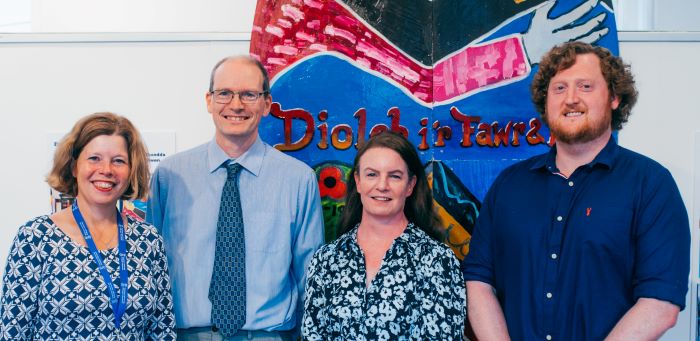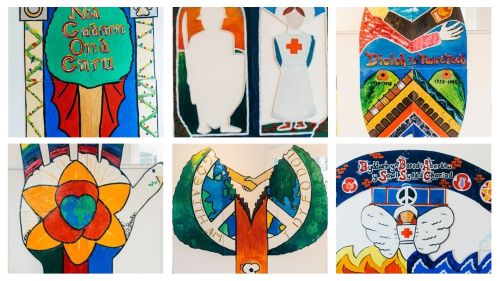
Swansea University's History Department
Imperial War Museum 14-18 NOW Legacy Fund Project
Welsh Secondary School pupils have been exploring history through art as part of a unique project run with Swansea University and the Imperial War Museum (IWM).
Swansea University’s Senior Lecturer in History, Dr Gethin Matthews was selected to take part in the IWN 14-18 NOW Legacy Fund (aimed at using artworks to engage communities with the legacy of war), as part of his research into war memorials and patterns of commemoration in Wales.
The six-month arts-based project was funded through royalties from the film ‘They Shall not Grow Old’, donated by Lord of the Rings Director, Peter Jackson.
Dr Matthews worked with over 100 students from across six Welsh-Medium schools to investigate war memorials in their area and design their own contemporary examples.
Dr Matthews explained:
“Throughout the new curriculum for Wales is the idea of ‘cynefin’ – the pupils’ home patch. Each school’s catchment area contains many war memorials and the graves of those who died because of the twentieth century’s conflicts. This project gave young people the opportunity to get to know a little more about these, and to contemplate their meaning.”
Working alongside Welsh creative artist Siôn Tomos Owen, the pupils looked at dozens of local war memorials, and the images and ideas they presented. Each school then created their own individual design using acrylic paint on plywood. These included features which firmly rooted them in their Welsh locality including, hills, rivers, terraced houses, and coal seams. However, all had a common thread, of promoting peace rather than glorifying war.

Participating students from Ysgol Gwynllyw commented:
“Rather than glorifying war, we think it is important to have memorials that remind us how important peace is.
“Through the project we saw how memorials differ over generations. Memorials dating from the first World War focused on the honour of those who gave their lives in war. Then as we move forward in time memorials become more focused on remembrance. Today we wanted our own modern memorials to promote peace.”
For students today, the World Wars of the twentieth century are very remote: it might have been their great-great-great grandfathers involved in the conflicts. Yet, the impact of these wars can still be seen in the turbulent politics of the world today. You can trace the conflict in the Middle East and in eastern Europe back to decisions that were made in 1914-1918. The students were encouraged to reflect on history and draw on their own thoughts and feelings around war and conflict in their designs.
Dr Matthews said:
“What struck us with many of the war memorials that we investigated was the quantity of names written on them, with many dying young. This project helped students connect with the rich local heritage around them and understand the human impact of events and actions of the past.”
Rachel Donnelly, Head of Partnerships at Imperial War Museum concluded:
“Projects, like this, are important to young people so that they can make sense of the past and explore how themes and consequences of war and conflict 100 years ago still have ripple effects across society today. We were absolutely thrilled with the outcome of this project.”
The schools involved in this project included Ysgol Llangynwyd, Ysgol Glantaf, Ysgol Garth Olwg, Ysgol Rhydywaun, Ysgol Cwm Rhondda and Ysgol Gwynllyw.
Pupils launched their designs at Cardiff's Pierhead Building. Their memorials will be on dispaly at Rhondda Heritage Park until September 2023 before returning to their schools.
Find out more about history courses and research at Swansea University’s History Department.
